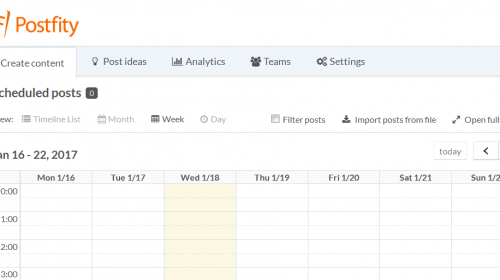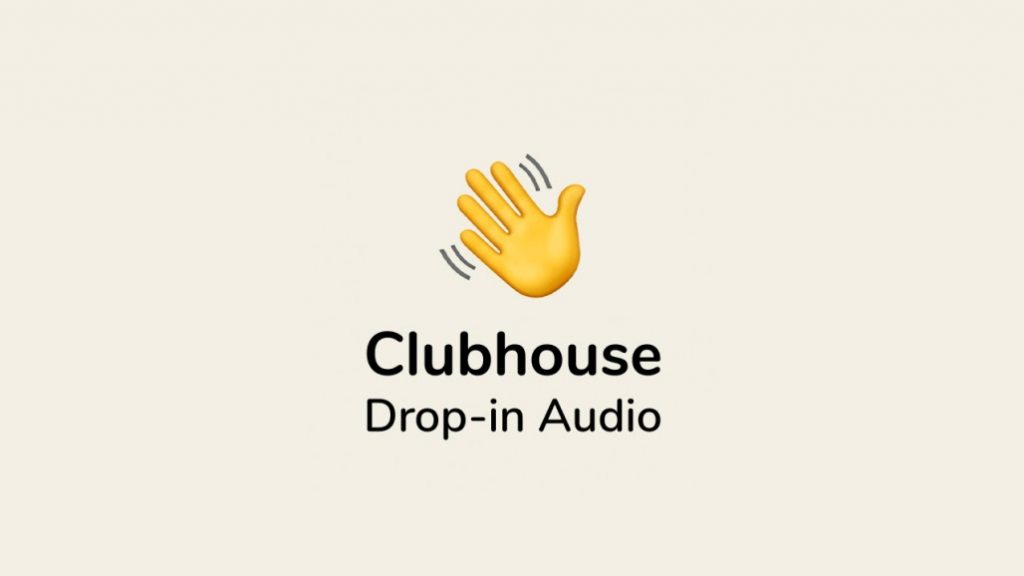
Clubhouse took the social media world by storm when it was introduced last year. The exclusive invite-only Clubhouse app generated a ton of buzz on Twitter and Facebook because of high-profile celebrities like Elon Musk and Kevin Hart joining the platform.
Clubhouse offers an easy-to-use platform that has gained rapid popularity because of its ability to emulate real-life discussions.
But is the Clubhouse app the next big thing for marketers?
The answer to this question isn’t quite simple. Although many brands have already introduced themselves on the Clubhouse app, it is still a lot less versatile than platforms like Facebook and Twitter.
Clubhouse’s exclusive nature makes it very alluring to regular social media users. So it’s fair for marketers wanting to leverage a highly engaging platform in its early stage.
What Is Clubhouse?
Clubhouse is an invite-only social networking app for iPhones that lets people join audio chat rooms to discuss anything they want. These chat rooms can be private ones with friends or open to all clubhouse users.
Paul Davidson and Rohan Seth launched Clubhouse in March 2020, which was initially marketed to popular celebrities, influencers, and industry thought leaders. Soon celebrities like Oprah Winfrey, Drake, Tiffany Haddish, Elon Musk, and Kevin Hart joined the platform, causing the popularity of the app to skyrocket in no time.
Users can create rooms to facilitate discussions based on industries, hobbies, interests, causes, and more.
Why Is Clubhouse so popular?
The exclusivity of the Clubhouse app is the differentiating point from other social media platforms. Anyone can download the app and create a Clubhouse account. But you won’t have access to chat rooms until an existing user invites you to the platform.
This creates a massive FOMO among social media users, which has people begging for invites already.
The whole point of a platform focusing entirely on “Live discussions” is to induce the FOMO in users so that they engage as much as possible.
It’s safe to say that Clubhouse has already nailed it.
As of now, the platform boasts 2 million active users every week and is getting more accessible to users every day.
How is Clubhouse different from podcasts?
Podcasts are a popular tool for marketers to engage their audience in audio-based content. Although the Clubhouse app solely focuses on audio content, it’s quite different from podcasts.
Podcasts are recorded and stored for users to access any time they want. But due to the live nature of the Clubhouse app, any conversation is lost the moment it ends.
In podcasts, only the hosts and guests talk, while the audience can only listen. Clubhouse provides users the opportunity to interact with the hosts and be a part of the discussion itself.
Moreover, podcasts can be edited before making them accessible to users. But whatever happens in a Clubhouse room happens in real-time and cannot be edited.
Brands That Are Using Clubhouse App
Clubhouse is offering brands an opportunity to get creative with a new social networking platform, and brands are already making the most of it.
The parent company of Burger King and Popeyes, Restaurant Brands International (RBI), hosted a chat named “Open Kitchen” to allow consumers and marketers to have a conversation with its executive the very next day of reporting its Q4 2020 earnings.
The National Football League’s (NFL) official hotel, Courtyard by Marriott, partnered with popular sports talk show broadcaster Rich Eisen and hosted a live conversation on the Clubhouse app. The topics of this conversation with fans spanned from predictions to commentary on the NFL Draft.
Fashion brands have also stepped in to engage with their audience. Gilda Ambrosio and Giorgia Tordini’s The Attico hosted a Clubhouse event to chat with users about the inception of its project “Life At Large”. This allowed users to get a “behind the scenes” look of their favorite fashion brand, a practice that is likely to be adopted by brands going forward.
How Does Clubhouse App Work?
The interface of the Clubhouse app is pretty basic. Unlike other mainstream social media platforms, you cannot share texts, pictures, or videos. You can create or join “rooms” where you can talk and listen to others talking – that’s it.
Clubhouse’s Main Tabs
When you open the Clubhouse app, you will find ongoing Rooms on the home page. At the top, you can find the search, inbox, calendar, and notification icons.
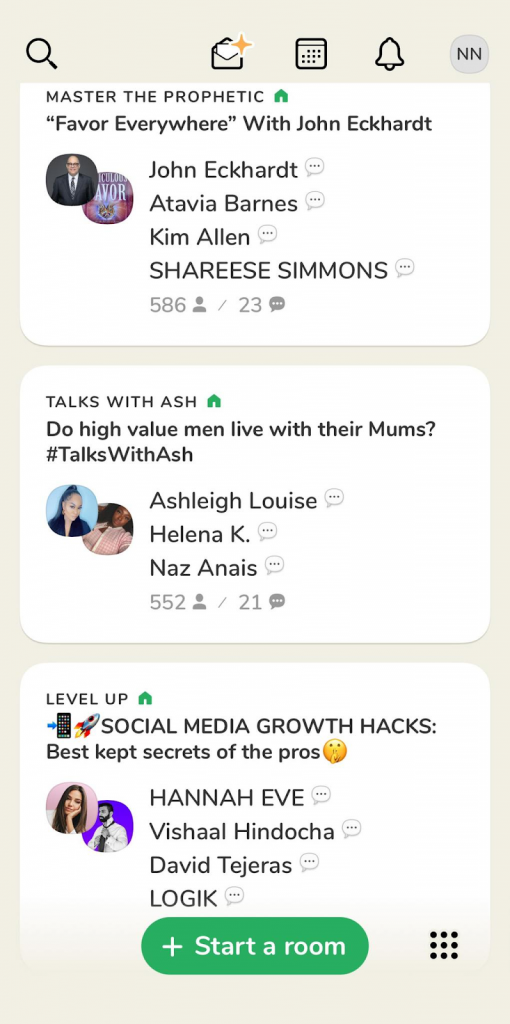
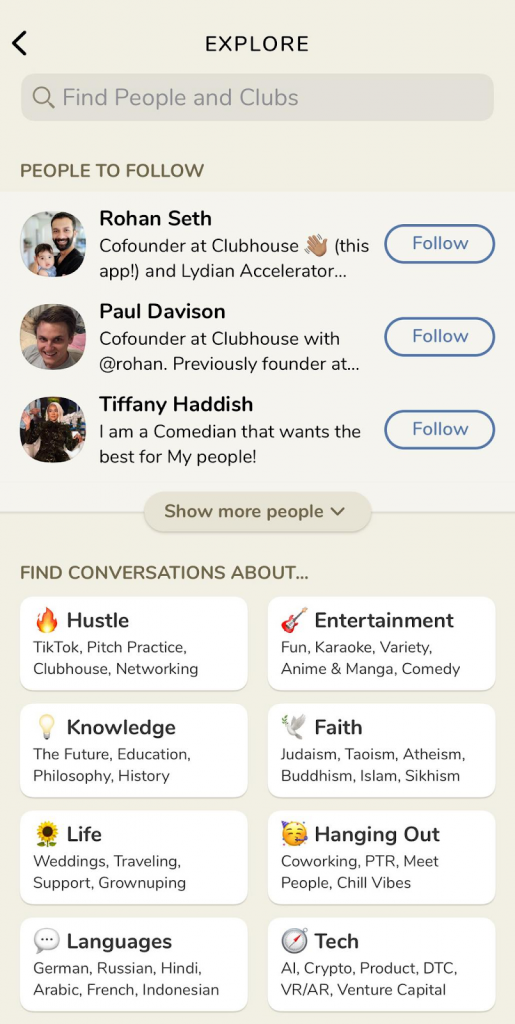
Once you tap the search icon, you will be directed to the “Explore” tab that helps you find Rooms, Clubs, or people to follow. You can also type in the search bar to find clubs and rooms. Clubhouse doesn’t allow users to search for specific rooms. The Calendar option allows you to see or create your scheduled Rooms.
At the bottom, you’ll find an option named “Start a room” to start your chat room. The nine-dot icon beside it allows you to have a private audio chat with specific followers who are online.
Clubhouse Clubs
Clubhouse Clubs are groups of users who share common interests, hobbies, industry, or other causes. You might be familiar with Clubs if you have joined Groups on Facebook or LinkedIn.
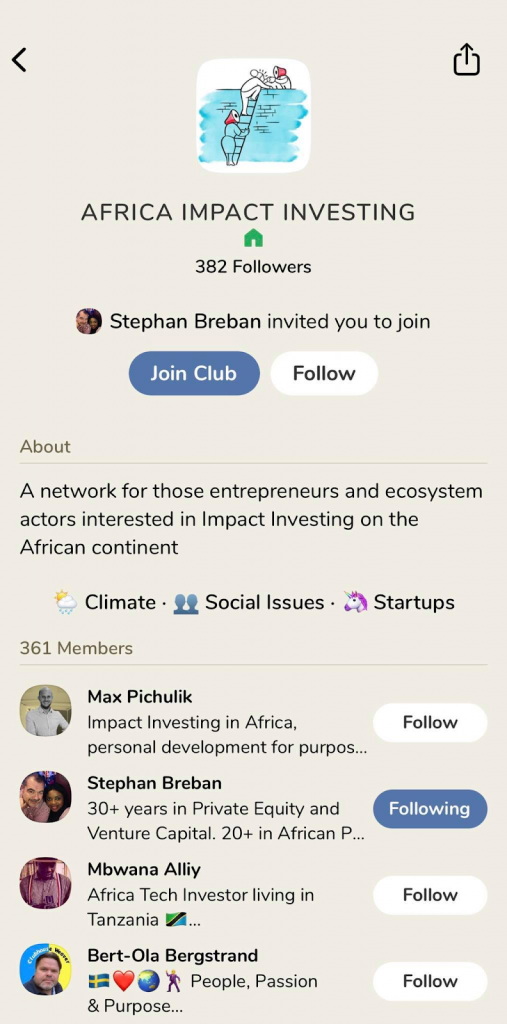
Joining a Club lets you receive notifications of any rooms hosted by it. To join a club, go to its profile page and tap “Follow”. Once you’ve followed a club, you can tap the “Following” button to leave it if you want.
Clubhouse Rooms
Clubhouse Rooms are like Zoom calls, except you can only use audio to communicate. You’ll enter a Room as a muted listener and have the option to join or leave a Room any time.
You’ll have to “Raise Hand” to join the conversation. Once you tap the “Raise Hand” option, the Room moderator has the option to unmute you or ignore the request.
Moderators and attendees can add people they follow to a Room. The invited user will receive a notification, enabling them to open the app and directly join the Room.
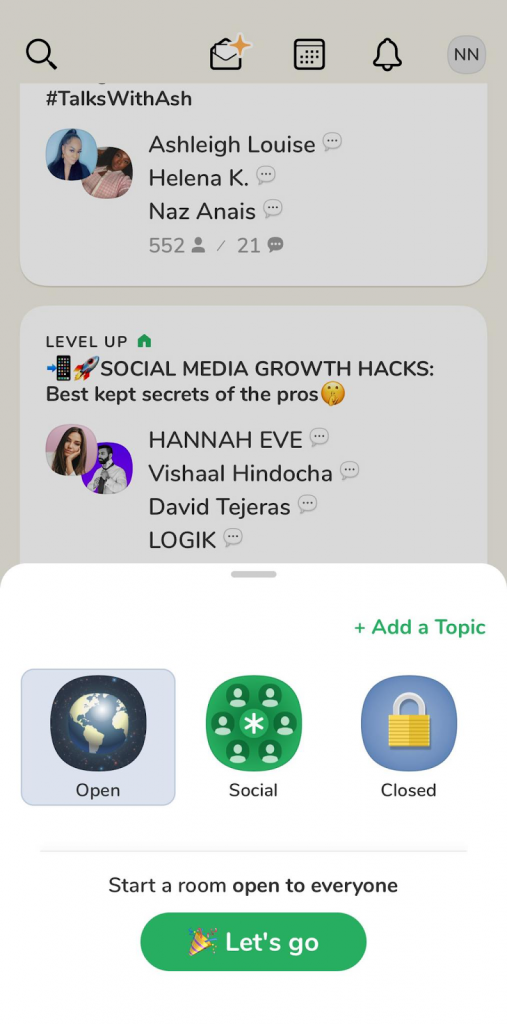
A Room will remain active unless a moderator ends it or until all the moderators leave the Room. Moderators can assign any other attendee to become moderators if they want the room to be active once they leave it.
Can you advertise on Clubhouse App?
Clubhouse doesn’t offer in-app advertising as of now. So you cannot buy ads as you do on other platforms like Facebook. Clubhouse will likely keep the platform ad-free for a while as it continues to focus on user growth and quality user experience.
Despite the lack of built-in ad functionality, there are a couple of ways you can advertise on the Clubhouse app.
Ad Reads by the host
Moderators can read an ad after a specific interval of time during a discussion. This acts the same way as mid-roll ads.
For example, during a long discussion, a host can read out a short ad read after every 45 minutes. You can throw in special offers to catch the attention of the audience during the ad read.
Sponsor Popular Events
You can become the title sponsor of popular events where the moderators add “XYZ Company presents” to the event title and description.
This helps your brand name to be visible at all times to participants. You can also combine mid-roll ad reads and title sponsorship. In that case, you can safely decrease the frequency of ad reads during the discussion.
Making The Best Use Of The Clubhouse App For Marketing
As you may have already realized, marketing on the Clubhouse app poses entirely different challenges from other mainstream social media platforms.
First of all, you need to understand if Clubhouse’s unique features are a good fit for your brand. If you believe that this platform has the potential to add value to your brand, you might want to consider a few more things to make the most of it.
Clubhouse Marketing Rule 1: Rethink Your Content Strategy
No content gets saved on the Clubhouse app. But that shouldn’t stop you from creating content for your audience.
You can host interactive talk shows and feedback sessions, where you can directly engage with your customers to gather feedback on a recent product or feature upgrade.
Clubhouse allows you to connect with customers on a personal level. Instead of curating your content to fit target groups, you can tailor your strategy to have conversations with individual customers. This gives you an unparalleled opportunity to understand the perspective of your audience.
Clubhouse Marketing Rule 2: Create Value For Your Audience
The “One-size-fits-all” strategy for Clubhouse is to create value for your audience. Instead of graphics, articles, and videos, conversations are the content in the Clubhouse app, and you need to contribute to the conversation to create value.
This is a golden opportunity for D2C brands. You can either contribute to conversations happening in relevant Rooms or start your own and initiate meaningful conversations.
Engage in topics relevant to your brand and audience. For example, if you are a sports footwear brand, be active and contribute meaningfully in conversations happening in fitness groups. Adding value to your customers will help you reach them in a non-promotional way and without sounding “salesy”.
Clubhouse Marketing Rule 3: Get Creative With Influencer Marketing
The Clubhouse app is a goldmine for influencers and industry thought leaders. Clubhouse is making way for an entirely new group of influencers focusing on live audio content.
Clubhouse is already testing an invite-only Creator-Pilot program with over 40 influencers. These influencers have access to special tools created for power users.
But brands need to be more proactive while partnering with influencers, as the live nature of content in Clubhouse makes it very difficult to moderate promotional messages communicated by influencers.
Clubhouse Marketing Rule 4: Take an Integrated Approach
Marketing on the Clubhouse app doesn’t have to be a standalone initiative. You can take an integrated approach to connect users across multiple social media platforms.
You can remodel your social media marketing strategy to leverage the most engaging features of each platform.
For example, you might plan to open a room to discuss an upcoming product launch. You can post a promo video on Facebook and Image Carousel on LinkedIn with an attached URL redirecting to the scheduled room.
You can also post an Instagram Story and redirect users to your room using the “Swipe Up” feature. This helps you use your existing audience on multiple social media platforms and connect them to a single conversation.
Things To Consider While Using Clubhouse For Marketing
Limited Audience
While the exclusive nature of Clubhouse easily generates FOMO among users, it limits the number of people you can potentially reach using the platform.
The Clubhouse app will likely be available to Android users very soon. But if you want to take advantage of the platform by moving earlier than your competitors, you have to take the limited reach of the Clubhouse app into account.
Clubhouse Marketing and Lack of Visual Content
Social media users are used to visual content. In fact, visual content generates the most reach and engagement in every major social media platform.
The uniqueness of the Clubhouse app due to its audio-only content can prove to be quite a challenge for marketers trying to maintain a consistent branding identity on the platform.
Clubhouse Marketing and Brand Vulnerability
Conversations in the Clubhouse app occur in real-time. This means anyone can ask you any question, and you have to answer it right away.
Although the Clubhouse app has no built-in functionality to record conversations, there are plenty of third-party apps which allow users to do so. Any missteps during the live conversation can prove to be very harmful to the brand.
For example, during a conversation in a Clubhouse event named “The Good Time Show”, Tesla CEO Elon Musk confronted Vladimir Tenev, the co-founder of the trading app Robinhood. Musk asked Tenev why Robinhood limited users from buying shares during the wild stock market battle between retail investors and big Wall Street funds fueled by members of a Reddit community named “WallStreetBets”.
While Tenev handled the situation calmly, things could’ve easily gone wrong for Robinhood, which was already under harsh criticism because of the move.
FAQ
How can I start a Clubhouse Club?
To start a club in the Clubhouse app, go to your profile and tap the gear icon to go to your settings page. Next, go to Clubhouse’s FAQ page to find club rules and application instructions. Here, you will also find a Club application link. You’ll receive a notification once Clubhouse approves your Club.
How can I start a Clubhouse Room?
Tap the “Start a Room” prompt at the bottom of your homepage. You can launch a “Closed” chat that can be accessed by specific people, a “Social” chat for your followers, or an “Open” chat for anyone on Clubhouse.
Why can’t I create a Club on Clubhouse?
Not all users can create a Club on Clubhouse. According to Clubhouse, the feature is “only available to the most active community members”. To apply for a Club, you need to have hosted three discussions or rooms on the Clubhouse app.
How can I get invited to Clubhouse?
The simplest way of getting invited to Clubhouse is through a friend who already has a Clubhouse account. Each Clubhouse user receives two invites. Your friend can invite you using your phone number.
Can I buy a Clubhouse invite?
No. You need an existing user to invite you to join the Clubhouse app.
Can Android users use Clubhouse?
No. Clubhouse is yet to introduce an app for Android devices.


